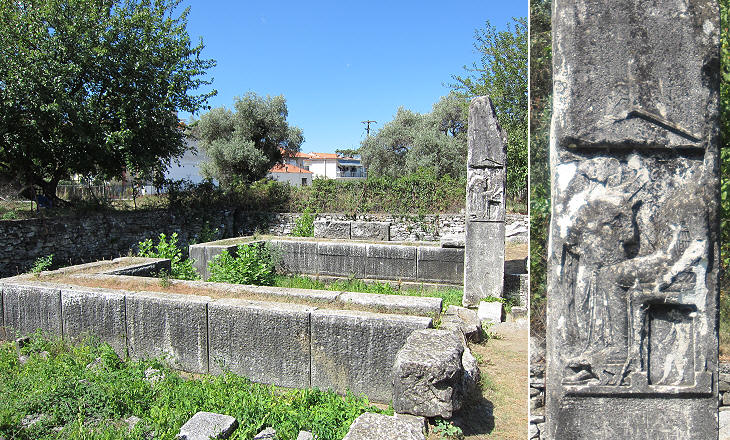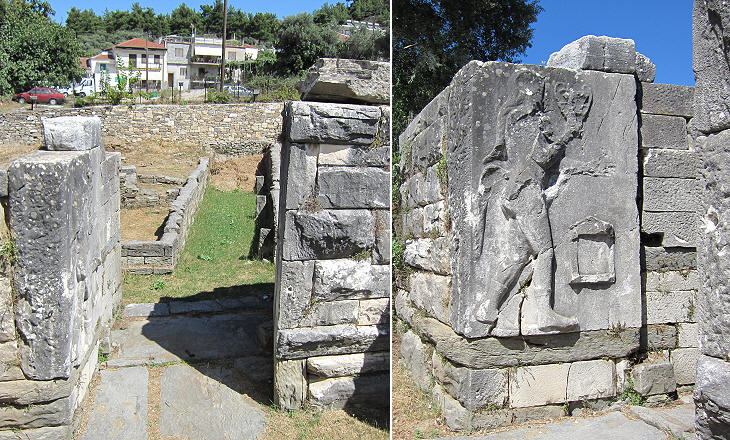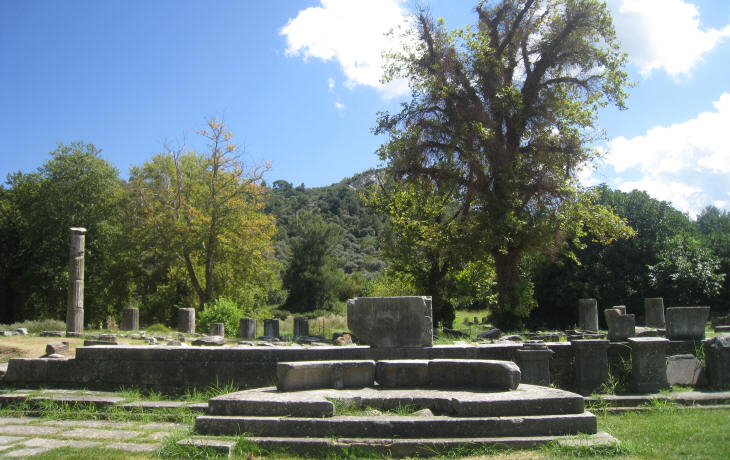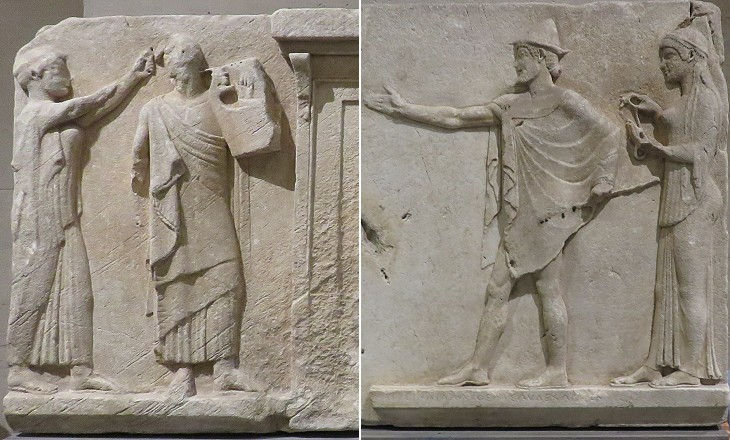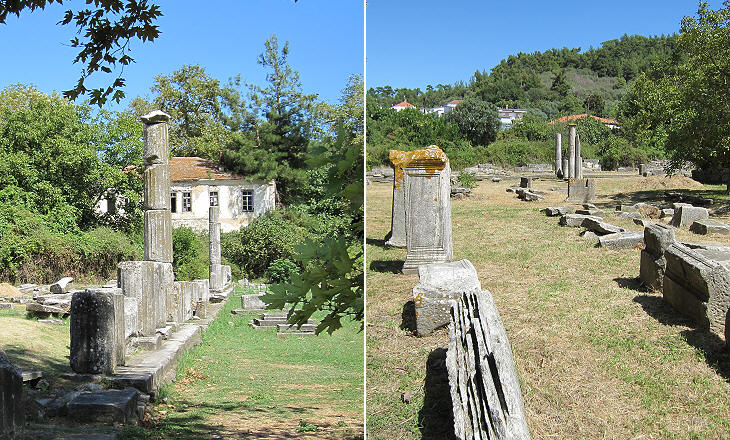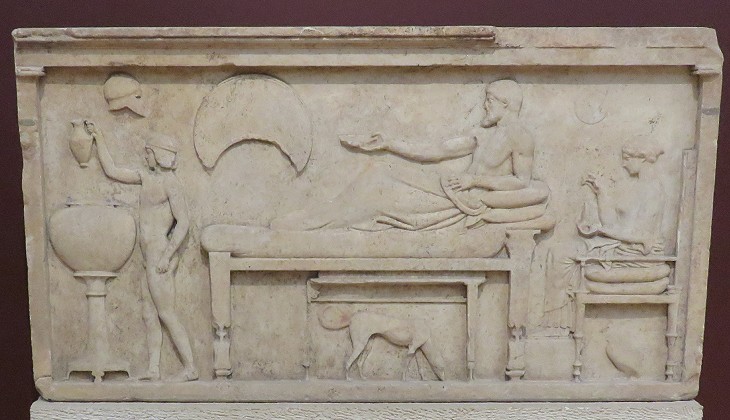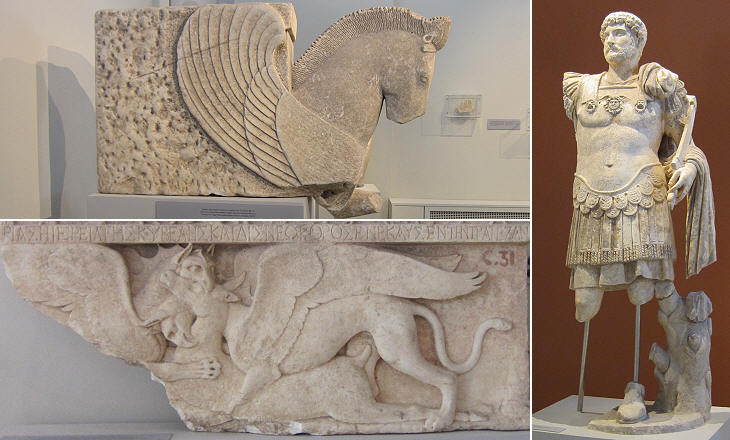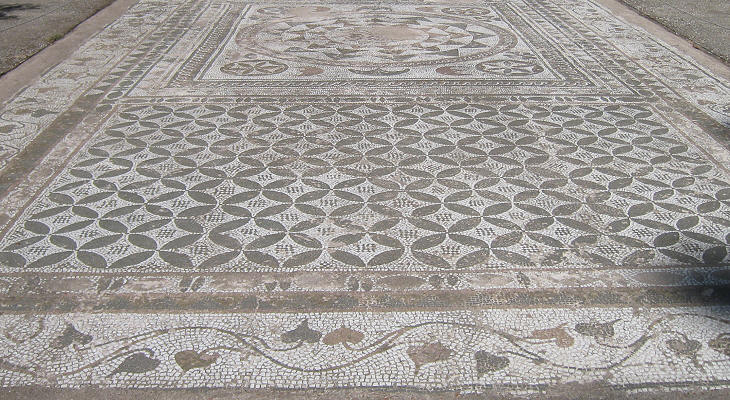  What's New! Detailed Sitemap All images © by Roberto Piperno, owner of the domain. Write to romapip@quipo.it. Text edited by Rosamie Moore. Page revised in April 2015. |
 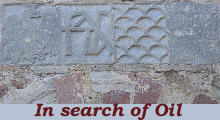 Thassos - The Lower Town Thassos - The Lower Town(coats of arms at a gate of the Metelino fortress)
Walls starting from the acropolis reached the sea to the west of the military harbour thus protecting the lower town of Thassos; notwithstanding the absence of other sizeable towns on the island, several gates were opened into the walls at a very short distance one from the other; they had a rather elaborate design and were decorated with reliefs portraying gods.
The gates probably had a ceremonial purpose and they led to nearby shrines; a large relief portraying Silenus indicates the relevance of the cult of Dionysus, of whom Silenus was a tutor and companion; this was probably due to the fact that Thassos produced famous wines and Dionysus was the god of winemaking; near the relief there is a small niche where offerings were made.
The agora (forum) of Thassos was excavated as early as the 1860s by French archaeologists, when the island was still part of the Ottoman Empire.
Some of the reliefs which decorated the passage of the Theoroi, the highest magistrates of the town, are now on display at the Louvre Museum in Paris.
During the Roman rule three porticoes surrounded the space of the old agora, an indication of the wealth of the town in that period. A triumphal arch, of which only the foundations remain, was dedicated to Emperor Caracalla who probably visited the island on his way to the eastern borders of the empire.
While the agora is part of an archaeological area many other ancient monuments are scattered around the modern town: there are temples, gates, other buildings and several sarcophagi.
Thassos remained an Ottoman possession until 1912 when it was occupied by Greek forces. Some of the works of art found by archaeologists on the island are therefore on display in Costantinople/Istanbul.
The Archaeological Museum of Thassos was built near the agora in 1935, but it was enlarged and renovated in 1999; its exhibits span more than a thousand years from anthropomorphic funerary monuments of the Bronze Age to mosaics of the Late Roman Empire; in 357 AD a very strong earthquake struck the island and it caused a partial collapse of the harbour structures into the sea where they remain submerged; this event caused the sudden decline of Thassos which is almost entirely without monuments of the Byzantine period.
The image used as background for this page shows a relief in the Archaeological Museum. Move to page one to see the acropolis. Other pages of this section: Metimno (Molyvos) Aivali/Cunda Samothrace Metelino Clickable Map of the Ionian and Aegean Seas with links to other locations covered in this website (opens in a separate window) SEE THESE OTHER EXHIBITIONS (for a full list see my detailed index). 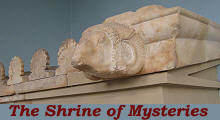 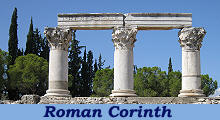 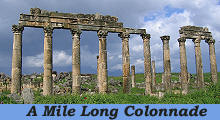 |
